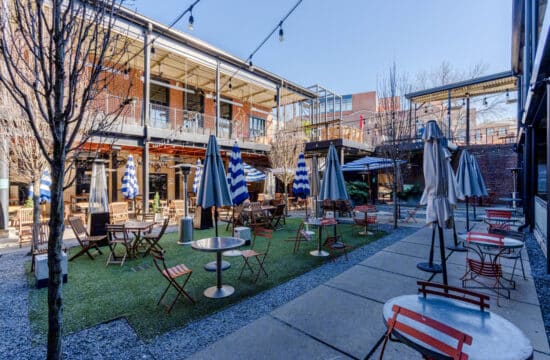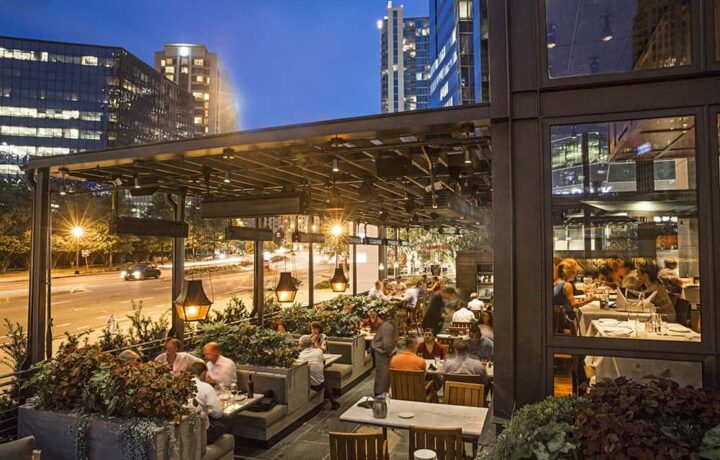Atlanta BeltLine Development Update 2025: 7 New Neighborhoods to Watch for Investment & Living

The Atlanta BeltLine continues to transform our city’s urban landscape, creating vibrant mixed-use communities that seamlessly blend modern living with green spaces, enhanced walkability, and authentic Atlanta character. As we progress through 2025, several key neighborhoods along the 22-mile BeltLine corridor are experiencing unprecedented growth, presenting exceptional opportunities for homebuyers, renters, and real estate investors.
The BeltLine Effect: Atlanta’s Urban Renaissance Catalyst
What began as an ambitious $4.8 billion vision to connect Atlanta’s in-town neighborhoods through a comprehensive network of trails, light rail transit, and parks has evolved into the Southeast’s most transformative urban redevelopment initiative. The Atlanta BeltLine project isn’t merely changing how residents navigate the city—it’s fundamentally redefining Atlanta’s approach to sustainable urban living, remote work opportunities, and community-centered development.
Key BeltLine Statistics:
- 22-mile loop connecting 45 neighborhoods
- Over $7 billion in private investment generated
- 1,300+ acres of new green space planned
- 33 miles of multi-use trails (when complete)
Top 7 BeltLine Neighborhoods for 2025: Investment & Living Guide
1. Westside Provisions District & Washington Park
Median Home Price Range: $450,000 – $800,000
The western corridor continues attracting major commercial and residential investment, with the Westside Provisions District establishing itself as Atlanta’s premier mixed-use destination. Washington Park has experienced a 35% increase in new residential developments, featuring luxury condominiums and modern townhomes targeting young professionals and families.
2025 Development Highlights:
- 15+ new restaurant and retail openings planned
- 400+ new residential units completing construction
- Enhanced BeltLine trail connectivity improvements
What to Watch: The upcoming West End BeltLine connection and expanded MARTA integration will significantly boost property values and walkability scores.
2. Old Fourth Ward & Poncey-Highland
Median Home Price Range: $375,000 – $650,000
These established BeltLine success stories continue evolving through strategic second-wave development. The focus has shifted from rapid gentrification to sustainable, community-driven growth that preserves historic character while incorporating modern urban amenities.
2025 Development Highlights:
- Historic building adaptive reuse projects
- New pocket parks and green space connections
- Affordable housing initiatives and inclusionary zoning
What to Watch: The Old Fourth Ward Park expansion and new mixed-income housing developments that address long-term affordability concerns.
3. Reynoldstown & Grant Park
Median Home Price Range: $320,000 – $550,000
These emerging BeltLine hotspots represent exceptional value for early investors and homebuyers. Reynoldstown is experiencing 25% year-over-year property value growth while maintaining its authentic neighborhood character. Grant Park benefits from proximity to Zoo Atlanta and improving BeltLine connectivity.
2025 Development Highlights:
- 8 new mixed-use developments breaking ground
- Local business district expansion
- Infrastructure improvements enhancing walkability
What to Watch: The planned Grant Park BeltLine spur and new transit-oriented development projects that will transform commuter accessibility.
4. Adair Park & Capitol View
Median Home Price Range: $280,000 – $450,000
The southern BeltLine segments offer the most compelling investment opportunities for budget-conscious buyers and investors. These historically significant neighborhoods provide affordable entry points while positioned for substantial appreciation as BeltLine Phase 2 connectivity improves.
2025 Development Highlights:
- Community land trust initiatives
- New MARTA bus rapid transit connections
- Historic preservation and neighborhood character protection
What to Watch: Southwest BeltLine construction progress and community-driven development that balances growth with affordability.
5. Kirkwood & East Atlanta
Median Home Price Range: $295,000 – $475,000
The eastern corridor is experiencing rapid transformation as BeltLine Phase 2 construction advances. These neighborhoods offer excellent value propositions for first-time homebuyers and investors seeking emerging market opportunities.
2025 Development Highlights:
- New trail segments opening Q3 2025
- Local brewery and restaurant scene expansion
- Green infrastructure and stormwater management improvements
6. Inman Park & Virginia-Highland Adjacent Areas
Median Home Price Range: $500,000 – $900,000
Established neighborhoods benefiting from BeltLine proximity continue attracting premium buyers seeking historic charm with modern connectivity. These areas represent stable, long-term investment opportunities.
7. Westside & English Avenue
Median Home Price Range: $250,000 – $400,000
The most affordable BeltLine-adjacent neighborhoods with the highest growth potential. Strategic investors are positioning themselves ahead of major infrastructure improvements and community development initiatives.
What Makes BeltLine Neighborhoods Atlanta’s Best Investment
Enhanced Walkability & Transit Access
Walk Score Improvements: BeltLine neighborhoods average 15-20 point increases in walkability ratings, with many achieving “Walker’s Paradise” status (90+ Walk Score). Planned MARTA light rail integration will further enhance car-free living options.
Green Infrastructure Integration
Unlike conventional urban development, BeltLine neighborhoods prioritize sustainable design:
- 1,300+ acres of new parks and green space
- Advanced stormwater management systems
- Urban tree canopy preservation and expansion
- Community gardens and urban agriculture initiatives
Thriving Local Business Ecosystem
Each BeltLine neighborhood develops unique commercial character:
- Artisanal coffee shops and local breweries
- Farm-to-table restaurants showcasing Atlanta’s culinary scene
- Boutique retailers and creative workspace developments
- Farmers markets and community event spaces
Community-Centered Development Approach
The most successful BeltLine neighborhoods balance growth with resident engagement:
- Neighborhood planning units (NPUs) with active community input
- Affordable housing preservation initiatives
- Local hiring requirements for major developments
- Small business incubation and support programs
Strategic Investment & Living Considerations
For Homebuyers: Timing Your BeltLine Purchase
- Early Development Phase: Neighborhoods like Adair Park and Capitol View offer 20-30% better value than established areas
- Infrastructure Timing: Consider planned BeltLine extensions and MARTA connections that will enhance property appreciation
- Community Engagement: Prioritize neighborhoods with active community development corporations and resident-driven planning
For Renters: Maximizing BeltLine Living Value
- Lifestyle Premium Analysis: BeltLine proximity commands 15-25% rent premiums, but walkability can eliminate $200-400 monthly transportation costs
- Development Timeline: Prepare for ongoing construction as these areas continue evolving
- Community Access: Leverage incredible access to Atlanta’s cultural events, from BeltLine Art installations to seasonal festivals
For Real Estate Investors: BeltLine ROI Strategies
- Long-term Growth Potential: BeltLine development represents a 25-year, multi-billion dollar investment with sustained appreciation potential
- Neighborhood Diversification: Different areas offer varying risk/reward profiles, from luxury markets (Old Fourth Ward) to emerging opportunities (Southwest corridor)
- Community Impact Investing: Consider developments that contribute to neighborhood character preservation and workforce housing
2025 BeltLine Development Outlook
The Atlanta BeltLine’s economic impact continues expanding, with recent studies showing:
- $7+ billion in private investment generated
- 48,000+ permanent jobs created
- 30% increase in property values within 0.5 miles of completed trail segments
- 15% reduction in vehicle miles traveled for BeltLine-adjacent residents
Major 2025 Milestones to Watch:
- Southwest BeltLine groundbreaking (Q2 2025)
- MARTA light rail design finalization
- Affordable housing trust fund expansion
- BeltLine Art program expansion with 25+ new installations
Future Vision: Atlanta’s Connected Urban Core
The BeltLine represents more than infrastructure—it’s creating a replicable model for sustainable urban development that prioritizes:
- Transit-oriented development reducing car dependency
- Green infrastructure improving air quality and stormwater management
- Mixed-income housing preventing displacement
- Local business development strengthening neighborhood economies
As these featured neighborhoods continue maturing, Atlanta is witnessing the emergence of a more walkable, environmentally sustainable, and economically inclusive urban core. The transformation accelerates in 2025, making now the optimal time for strategic positioning.
Take Action: Your BeltLine Opportunity
Whether you’re considering your first home purchase, seeking rental options that align with sustainable living values, or evaluating real estate investment opportunities, these BeltLine neighborhoods offer compelling options for every budget and lifestyle preference.
Key Success Factors:
- Research each neighborhood’s unique character and development timeline
- Consider long-term infrastructure improvements and transit connectivity
- Engage with local community organizations and development planning processes
- Evaluate both immediate lifestyle benefits and long-term appreciation potential
The Atlanta BeltLine transformation is accelerating—and strategic positioning in these emerging neighborhoods offers both exceptional living experiences and strong investment returns.
Ready to explore BeltLine living opportunities? These seven neighborhoods provide diverse options for first-time homebuyers, growing families, and experienced investors. Success requires understanding each area’s development trajectory, community character, and growth catalysts to identify the perfect match for your lifestyle goals and financial objectives.


